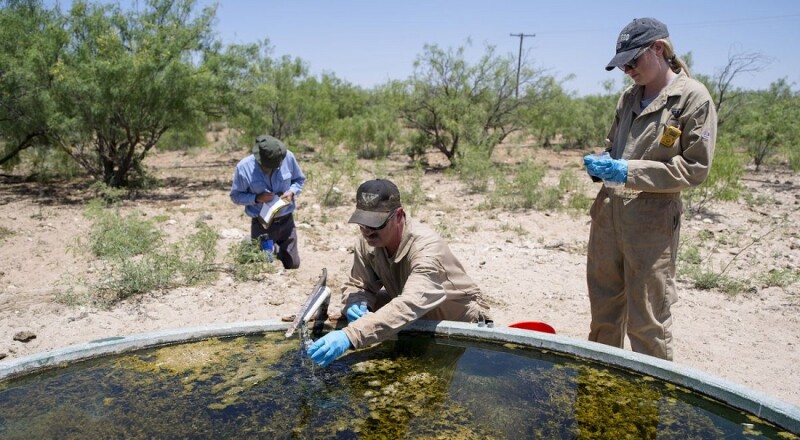Ashley Watt is nothing if not a friend of hydraulic fracturing. She’s invested in mines that supply the sand fracturing blasts into the ground. Her family owns a ranch larger than Manhattan that’s home to hundreds of oil and natural gas wells. Her Twitter handle is “Frac Sand Baroness.”
That’s what made it all the more jarring almost 3 weeks ago when Watt began publicly railing against one particular oil driller for leaks on her land. Noxious wastewater from oil drilling began leaching across the ground, endangering people and livestock. By her count, the pollution has killed four cows and two calves so far. Chevron, which drilled the 1960s-era wells that polluted Watt’s land, brought in earth-moving equipment and a well-control crew, even though it had sold most of its interests there years ago. It took 10 days to halt the first leak. Given the hundreds of other aging wells dotting the land, it’s done little to put Watt’s mind at ease.
“I am not anti-oil industry,” Watt said in an interview. “That is the economy here. It’s a good business.” At the same the same time, she said, “We have to be responsible stewards. If we can’t do it right here in the Permian Basin, then how can we do it right anywhere? Nobody should let us in if we’re going to act like this.”
And just like that, Watt—whether she liked it or not—became an ally to scores of environmentalists and activists who’ve been warning for years that America is on the verge of an environmental disaster. Long before the advent of shale drilling techniques that fueled the greatest move toward energy independence the nation’s ever seen, conventional oil explorers left the country pierced with millions of defunct wells that are aging by the day and increasingly springing leaks.
“There’s this enormous backlog” of abandoned wells, “and we don’t have financing in place to clean them up,” said Daniel Raimi, a fellow at the nonprofit research group Resources for the Future. “We’ve seen very clearly that existing regulatory structures, particularly at the state level, have not properly incentivized companies to clean up their infrastructure.”
There are 3.4 million old crude and gas wells in various states of abandonment across the US, an almost 20% increase in the past decade, according to the Environmental Protection Agency (EPA). Fewer than half of those holes have been plugged, EPA figures showed. In all, the wells are spewing about 7 million metric tons of methane into the atmosphere every year, although unplugged wells tend to be 100 times more polluting than their plugged brethren.
Methane releases from abandoned gas wells have been particularly egregious, growing by 40% in the past three decades. As the energy industry pivots away from fossil fuels to combat climate change, the inventory of untended wells will only expand.

